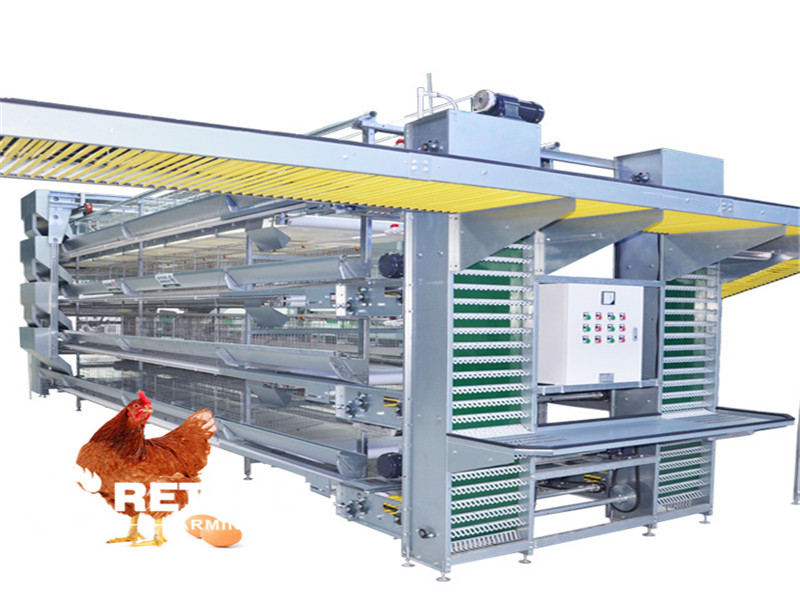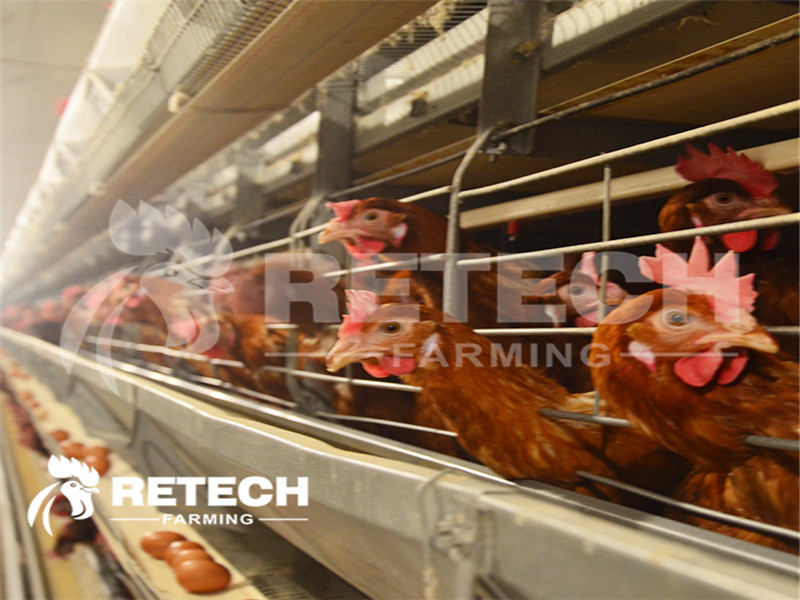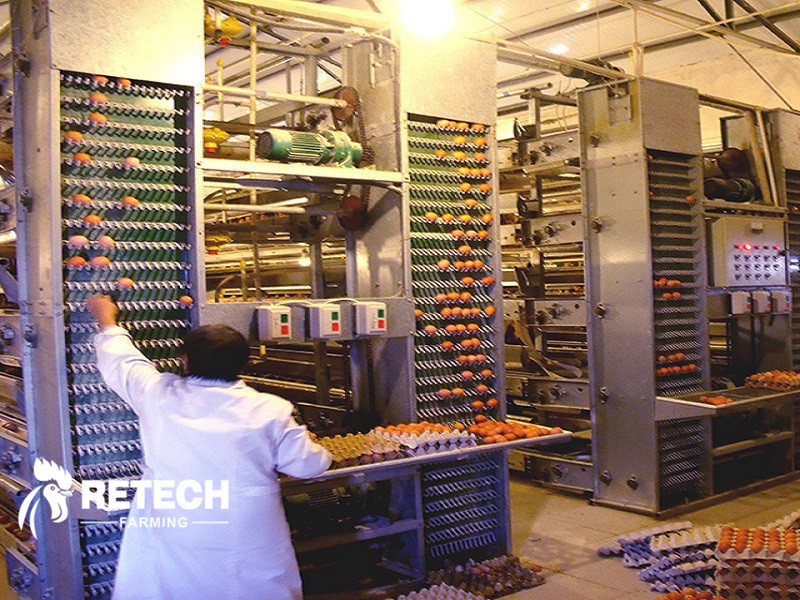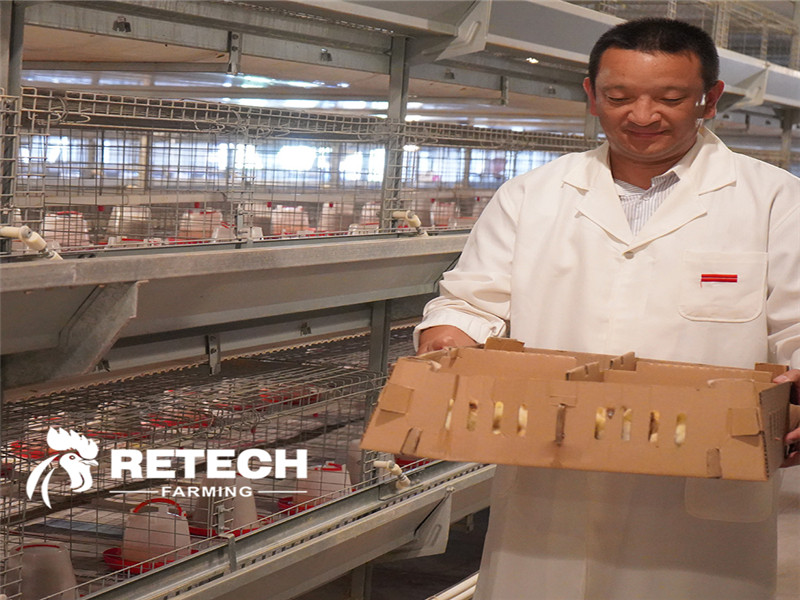Close search
 Published :
/
Published :
/ Posted by : Retech
Posted by : RetechBrown-shell hens. The body size is larger, the eggs are heavy, and the eggs are heavier than the white shell eggs when they are laid. Eggs have a low breakage rate and are suitable for transport and storage. Chickens have a docile temperament, low sensitivity to stress, and are easy to manage. The egg production is higher, the commercial generation chicks grow better, the cold resistance is good, and the egg production rate in winter is relatively stable. Fewer pecking habits, low death rate, and hybrid chickens can be distinguished from males and females by feather color.
The disadvantage is that the daily feed intake is 5-6 grams more than that of white-shell hens, the area of each chicken is about 15% more than that of white-shell hens, the feeding and management technology is higher than that of white-shell hens, and blood is more likely to appear in eggs. Spots, dark spots, etc., poor heat resistance.
White-shell hens are bred based on the Laihang breed. Smaller body size, less material consumption, early start of production, high egg production, high egg production feed remuneration, and high breeding density per unit area.

It has strong adaptability and can be raised under various environmental conditions. The rate of blood spots and meat spots in eggs is very low, so it is suitable for intensive cage management.
The disadvantages are small egg weight, nervousness, poor stress resistance, and many pecking habits, especially in the early stage of laying, causing more casualties.
Pink-shell hens refer to the color of the eggs, which is between brown-shell eggs and white-shell eggs, and is light brown.
There are mainly the following varieties:
① Xingza 444. This breed is a three-line matching hybrid powder-shell layer bred by the Canadian Chevron Company. The commercial generation can be segregated from male and female, and the chicken fluff is white. Female chicks have light brown hairs at the junction of the front end of the head with the beak, but male chicks do not.
The chicken has high egg production rate, small body size and high feed conversion rate, but has high requirements on environmental conditions, is easily stimulated and frightened, and has poor cold resistance.
The weight of commercial chickens is 1.40-1.55 kg at 20 weeks of age, and 1.81-2.04 kg at 72 weeks of age. The 72-week-old chickens lay 270 to 290 eggs, with an average egg weight of 60 grams. The average daily harvest of each chicken during the laying period The food intake is 115 grams, and the survival rate during the laying period is 92% to 95%.
② Yakang chicken. This breed is a pink-shell layer bred by the Israeli P.B.U Breeding Company, which is matched with the four lines.
Its commercial generation can use fast and slow feathers to separate males and females. The variety has strong stress resistance, heat resistance, and disease resistance. The egg-laying period consumes 103 grams per day.

The breed of laying hens is selected according to the local market demand.
Determine the variety according to your own breeding level.
White-shell hens are small in size, eat less food, and produce large eggs, but their egg weight is small, their anti-stress ability is poor, and they are easy to peck anus and feathers. Brown-shell hens have larger body size, larger egg weight, lower egg breakage rate, strong anti-stress ability, less feather pecking and anus pecking, and low death rate, but they consume more material and are not heat-resistant. White-shelled hens are tall.

① Check. First select a high-yielding breed, check the breed purity and breeder production performance of the breeder farm, and whether the breed is bred according to the matching line and follows the acceptance regulations of the breeder farm. Check the breeding management level and hatching level of the breeder farm, understand the immunization program and antibody level of the breeder flock, and whether there has been an infectious disease in the breeder poultry farm.
② look. It mainly depends on whether the hatching time of the chicks is normal, whether the size is uniform, whether the mental state is good, and whether it conforms to the characteristics of the breed. High-quality chicks have big eyes, protruding outwards, responsive, lively and active, the villi length is moderate, neat, clean, even and shiny, the anus is clean, the abdomen is moderate in size and flat, the navel is well healed, dry, covered with villi, No bloodstain, beak, legs, toes and wings intact, well developed.
Inferior chicks are mentally wilted, shrink their heads and close their eyes, have shriveled legs and feet, stand unsteadily, have a slow response to the surrounding environment and sound, do not like activities, and are afraid of cold. The villi are disheveled and dirty, lacking luster, sometimes very short or absent, yellowish-white stools stick around the anus, the abdomen is enlarged and protruding, indicating malabsorption of the yolk, the umbilicus is poorly healed, moist, with bleeding marks, lack of villi coverage, obvious nudity , weak and weak.

③ Listen. Mainly listen to the chirping of the chicks. High-quality healthy chicks have loud, crisp and short calls; weak chicks have weak and hoarse calls, or scream, but pay attention to distinguish them from calls caused by unfavorable environmental conditions such as high temperature, lack of water, and cold.
④ Touch. Hold the chick in your hand and feel for fat, belly size, good yolk absorption, and well-balanced body. Healthy chicks are struggling, well-proportioned, of moderate weight, and have a flat, soft, and moderately sized abdomen, indicating good yolk absorption and healing of the umbilicus. Weak chicks feel struggling and weak in the hand, thin, flaccid, and their abdomens are enlarged.